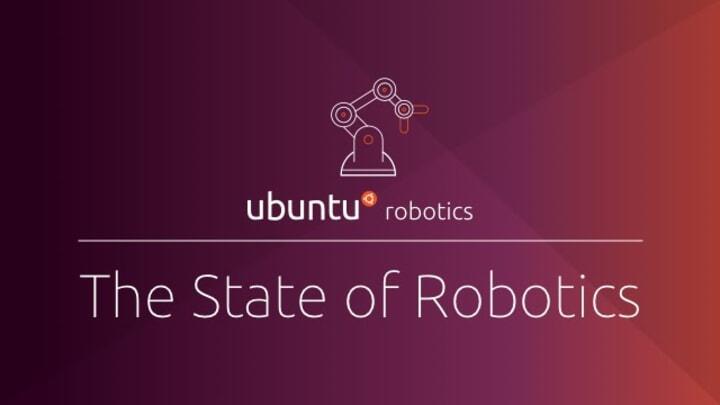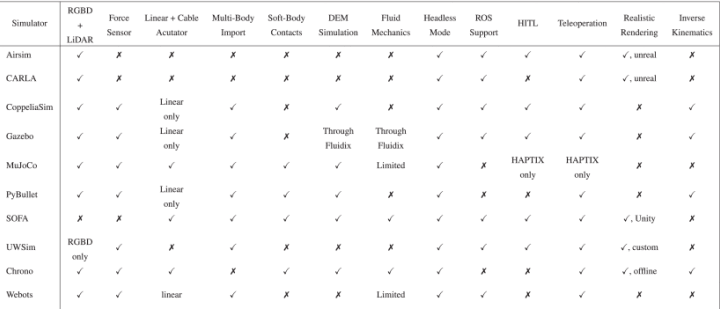From autonomous mobile robots to robot butlers. It is impressive to see how much progress has been made in the last decade. Thanks to our open source robotics community we keep learning, and this newsletter is filled with events, R&D updates, new products and tutorials for you.
Thanks July!
Open source robotics events – ROS Con Japan and ROS Con
Let’s start with an important reminder. The biggest ROS conference is coming soon. If you live in the APAC region, on September 16, you have the opportunity to attend ROS Con Japan. Our APAC team is ready to welcome you at our booth.
Also, this is your last chance to get an early registration for ROS Con, which will take place in New Orleans, later this year. We will also be there!
So if you want to learn more about ROS and talk with the innovators leading this robotics revolution, don’t miss this great opportunity.
Open source robotics events – PX4 Developer Summit
We are happy to announce that we will also be at the PX4 Developer Summit on September 14-15. Our team will be at what is the biggest drone open source event, organized by the Dronecode foundation. Come to our virtual booth to learn more about how we have worked with drone companies and built the foundations of robotics security. Bring all your questions about Ubuntu to the experts.
Together with the Dronecode Foundation, we are also exploring the challenges for drone developers to help the community overcome these barriers. If you are working in this field, we would like to learn from you.
- Please complete this 5 minutes survey, that aims to understand our community barriers and challenges when updating and maintaining software infrastructure on drones.
We will share the results during the PX4 conference!
Want to book a meeting with us during the day? Schedule a meeting for the day now!
From autonomous mobile robots to humanoids robots
It wasn’t too long ago that we were all wondering when robots would help us do our house chores or be our own personal butlers. Only a few years ago autonomous mobile robots were still breaking through in the market, and humanoid robots like Pepper were the best we had.
Fast forward to 2021 and here comes the reveal of Walker X. Maybe this new robot from UBTECH isn’t exactly a robot butler yet, but it is certainly a big promise from a global AI and humanoid robotics company. A promise of a humanoid robot that aims to be functional. Have a look at the video below:
UBTECH is promoting a robot capable of navigating autonomously in indoor environments, with an incredible balancing mechanism. Unlike other humanoid robots, like Pepper, WalkerX can handle objects with its hands. Even more, unlike many other commercial humanoids, Walker X doesn’t have an inbuilt tablet! That means that the robot relies entirely on speech recognition and chat generation. It uses an LCD in his front visor, to show some small animations/expressions of the robot, clearly needed to convey emotions to ease the communication with people.
While the robot seems to be preloaded with some interactive games and functionalities, claiming that the robot will be able to give you back massages is what makes Walker X unique. Safe physical interactions is a field we have fallen short in the last few years.
Yes, let’s see how much of this is true, and actually how functional the robot is. But remember, taking this commercial risk has also accelerated the field. We welcome walker X and we wish it a successful journey!
Advancing telepresence with i-BOTICS
The independent innovation hub, i-Botics, initiated by TNO and the University of Twente develops knowledge and technology for value-adding robotic solutions. I-Botics cooperates with Industry partners in the full value chain and governmental organizations.
In July, they presented a telepresence solution that shows how we can accelerate robotics adoption while supporting those in need. We usually think of telepresence as one operator and one robot, but the efficient thing to do is have a human who can sometimes be in the loop for a set of different robots. i-Botics is on the right path:
In the following trial, their operator in the Netherlands first helps out a lady in Switzerland using avatar ANYmal. Afterwards, he switches to avatar EVE in Norway to help out a chef. As you can see
Even though the robot’s autonomy is still limited, the mechanical system is not. Telepresence robots have been out there for more than 20 years, starting with early devices only capable of rotating and panning a webcam for operators to have a better view. Today, robots are capable of conducting complex interactions with objects and their environment. Impulsing the development of telepresence stations might be the quickest way for robots to start making a change in the life of those that require care.
Flying like a beetle
Whether it is to reduce train noise or optimize the movement of complex mechanisms, nature keeps inspiring engineers around the world to overcome technical limitations. And today we are flying like ladybugs. Well, that is not quite accurate. We are lifting like ladybugs. Much better.
You have seen drones, once they are knocked down, they can’t get back up. These recovering mechanisms are challenging for systems that should be light and aerodynamic. So who better than nature to help us understand how.
If you caught a ladybug on their back, the insects can use their tough exterior wings, called elytra, to self-right themselves in just a fraction of a second. Following this design, researchers from the Ecole Polytechnique Federale de Lausanne created self-righting drones with artificial elytra. Simulations and experiments show that the artificial elytra can not only help salvage fixed-wing drones from compromising positions, but also improve the aerodynamics of the vehicles during flight. Find the complete study here.
What is the best simulation tool for autonomous mobile robots, drones, soft robots, swarms?
Yes, these questions could start a never-ending debate. And no, we won’t provide a definitive answer. Instead, we will point you in the right direction.
Many developers specialize in one simulation tool or another. Some simulators are better at one aspect of robotics than at others. Some of them are compatible with other tools or frameworks. But luckily, a recent study might help you if you are looking for the right simulation tool for your work. Have a look at the review paper from Australia’s CSIRO, “A Review of Physics Simulators for Robotics Applications” by Jack Collins, Shelvin Chand, Anthony Vanderkop, and David Howard, published in IEEE Access (Volume: 9).
For a complete list and comparison, please visit the above-mentioned paper.
Benchmarks are useful tools for the community. It helps us understand current gaps and strengths. As the field of simulation tools grows, so does the need for metrics that capture the accuracy of the real-world representation.
Open source robotics – tutorial
Looking for a guided tour to start using Autoware? But you missed the Autoware hackathon?
No problem, the recording is now available.
Have a look at how you can start using Autoware with ROS 2 today.
Outro
Walking the walk and flying the bug… nope, that didn’t work. But what definitely worked was July; a month fully packed with interesting releases, new technologies and tutorials!
And just like you, we want to keep learning! So send us a summary of your robotics innovation and project to robotics.community@canonical.com and we will share it in our next robotics newsletter. Thanks for reading!




